After the creation of the USSR in 1922, Moscow recognized the Crimean Tatars as the indigenous population of the Crimean Autonomous Soviet Socialist Republic within the framework of the policy of indigenization. In the 1920s, Tatars were allowed to develop their culture. There were Crimean Tatar newspapers, magazines, educational institutions, museums, libraries and theaters in Crimea.
Crimean Tatar, along with Russian, was the official language of the autonomy. It was used by more than 140 village councils. In the 1920s and 1930s, Tatars made up 25-30% of the total population of Crimea. However, in the 1930s, Soviet policy toward the Tatars, as well as toward other nationalities in the USSR, became repressive. Initially, there was dekulakization and deportation of Tatars to northern Russia and the Urals. Then the violent collectivization and the Holodomor of 1932-1933. And then – the purge of the intelligentsia in 1937-1938.
The main phase of the forced resettlement took place in less than three days, beginning at dawn on May 18, 1944 and ending at 4:00 p.m. on May 20. A total of 238,500 people were deported from Crimea – almost the entire Crimean Tatar population. For this purpose, the NKVD[1] involved more than 32,000 security officers[2].
In the first half of 1944, Crimean Tatars were again brutally attacked when Soviet leader Joseph Stalin accused 200,000 Crimean Tatars of collaborating with Germany during World War II. In May 1944, the NKVD issued an order “On Measures to Clean the Territory of the Autonomous Republic of Crimea of Anti-Soviet Elements”, which paved the way for mass deportations[3].
The official reason for the forced relocation was the accusation of the entire Crimean Tatar people of treason, “mass extermination of the Soviet people” and collaborationism – cooperation with the Nazi occupiers. Such arguments were contained in the decision of the State Committee for Defense on deportation, which appeared a week before it began. However, historians cite other, unofficial reasons for the resettlement. Among them is the fact that Crimean Tatars historically had close ties with Turkey, which the Soviet Union at those time saw as a potential rival. In the Union’s plans, Crimea was a strategic springboard in the event of a possible conflict with the country, and Stalin wanted to be safe from possible saboteurs and traitors, whom he considered Tatars.
This theory is also supported by the fact that other Muslim ethnic groups, such as Chechens, Ingush, Karachays, and Balkars, were relocated from the Caucasus regions adjacent to Turkey.
During the 1950s and 1960s, Tatars fought for their right to return to their historic homeland, including through demonstrations in Uzbek cities. In 1968, the reason for one such action was Lenin’s birthday. Authorities responded by force and dispersed the rally.
In 1956, under Nikita Khrushchev’s de-Stalinization program, Crimean Tatars were granted civil rights, but they were not allowed to return to Crimea, which was incorporated into the Ukrainian SSR in 1954. It was not until the early 1990s that many Crimean Tatars, taking advantage of the collapse of Soviet central government, began returning to Crimea after nearly five decades of internal exile. At the beginning of the 21st century, there were about 250,000 of them[4].
Gradually, the Crimean Tatars managed to expand their rights, but informally, but no less severe, ban on their return to the Crimea lasted until 1989. Over the next four years, half of all Crimean Tatars living in the USSR at the time, 250,000, returned to the peninsula[5].
According to the UN Declaration on the Rights of Indigenous Peoples[6] (2007) and the UN Convention on Indigenous and Tribal Peoples of 1989[7], Indigenous peoples are considered to be descendants of those who inhabited the country or geographical area of which they are a part. is a country, at the time of its conquest or colonization or at the time of the establishment of existing state borders, and which, regardless of their legal status, retain some or all of their social, economic, cultural and political institutions. As for the Crimean Tatars, they were not just formed as a people in the Crimea, they had their own statehood there, and to this day they have preserved their historical authorities – the Majlis and the Kurultai.
In Ukraine, the indigenous peoples are the Crimean Tatars, Karaims and Krymchaks. The issue of determining their status became relevant with the beginning of Russian aggression. The invasion of Ukraine by Russian troops in February 2014 and the ongoing occupation of Crimea significantly exacerbated the problem of ensuring the rights of the Crimean Tatar people as the indigenous people of Ukraine.
Crimean Tatars make up only 0.5% of Ukraine’s population, but they are geographically concentrated: 98% of the population lives on the Crimean Peninsula, which is considered their ethnic homeland. According to the latest reliable census, in 2001, Crimean Tatars made up about 12% of the Crimean population[8].
The leader of the Crimean Tatar people, Mustafa Dzhemilev, said that in last 7.5 years, the occupiers managed to expel from the Crimea about 30 thousand Crimean Tatars and bring up to 1.5 million Russian citizens[9].
From the very beginning of the Crimean Tatar movement, one of its main demands, along with return and settlement, was to ensure the Crimean Tatars the right to self-determination, which was interpreted by Crimean Tatar leaders as the right to restore the national statehood of the Crimean Tatar people.
In general, there is reason to believe that the situation in the Crimean Tatar political spectrum is determined by three leading trends:
1) strengthening of internal clan contradictions on the basis of political and business interests (clashes in Sudak, etc.);
2) strengthening the influence of the opposition in the Crimean Tatar national movement (CTNM);
3) intensification of authoritarian methods of managing the situation by the current leadership of the Mejlis, in order to maintain the dominant position of his team in the CTNM.
In the Resolution №1140-VII[10] “On the Statement of the Verkhovna Rada of Ukraine on Guarantees of the Rights of the Crimean Tatar People as a Part of the Ukrainian State” (dated March 20, 2014), Ukraine guaranteed the preservation and development of the identity of the Crimean Tatar people as an indigenous people. The Mejlis of the Crimean Tatar people, the executive body of the Kurultai of the Crimean Tatar people of Ukraine, and the Kurultai are recognized as the highest representative body of the Crimean Tatar people. In the mentioned resolution, the Verkhovna Rada of Ukraine also instructed to develop draft laws that would define and consolidate the status of the Crimean Tatar people as the indigenous people of Ukraine. Relevant rule-making activities are carried out taking into account a number of factors, primarily security, in particular, illegal repressive measures of the Crimean occupation administration aimed at suppressing the Crimean Tatar resistance movement, including a ban on the Crimean Tatar People’s Majlis[11].
Under Russian legislation, Crimean Tatars do not have a special status on the peninsula. On April 21, 2014, a month after the annexation of Crimea, Russian President Vladimir Putin signed a decree “On measures to rehabilitate the Armenian, Bulgarian, Greek, Crimean Tatar and German peoples and state support for their revival and development”[12]. Despite these assessments, in the years since the annexation of Crimea, the UN General Assembly has adopted a number of resolutions calling on Russia to end human rights abuses in Crimea: including the mass detention of Crimean Tatar activists and human rights defenders by Russian security forces and their trials on terrorism charges.
Meetings on Crimea in the UN Security Council are held almost every year, but, unfortunately, Russia has veto right. Any attempts to pass a UN Security Council resolution on Crimea that would be binding, failed because of Russia’s veto. The only way to run out of the situation is the resolutions of the UN General Assembly, they are adopted every year. This is an attempt to remind the world about Crimea, despite the fact that such resolutions are of a recommendatory nature. Instead, based on these documents, a UN monitoring missions[13] operates in Ukraine, which reports annually to the General Assembly. In addition, the resolutions of the General Assembly are referred to by other international bodies when making decisions on Crimea.
Back in 2017, the UN International Court of Justice ruled that Russia should lift the ban on the Crimean Tatar People’s Majlis as an extremist organization on its territory and in annexed Crimea, but the Russian authorities did not do so. In September 2019, the UN Human Rights Monitoring Mission again called on Russia to lift the ban on the Majlis.
The Kremlin, unlike the Ukrainian government, knows how “to work” with national minorities. From the very beginning, it began to pursue a policy, on the one hand, of isolating the true patriots of the Crimean Tatar people, and, on the other hand, of recruiting collaborators with an imitation model of some kind of autonomy. The same has been done in many Russian regions: there are formal powers of national organization, but the power in the region is still controlled by the Kremlin, and such levers and opportunities will not really be used. Of course, Ukraine must oppose this clear position and stop doubting whether or not to give Crimean Tatars autonomy in Crimea and to put the end to this issue. It is necessary, that the Crimean people themselves see the difference between the Kremlin’s imitation approach and Ukraine’s honest approach.
Discussions about the need for autonomy intensified after Russia’s illegal occupation of Crimea. In particular, issues of status, the content of autonomy are invested in the production of a vision of the future of Crimea as part of considerations on the directions of deoccupation of the peninsula.
Nowadays, in the Ukrainian civil society exists three conditional components concerning the Crimean Tatars autonomy:
– “Leave everything as it is”. This position does not exclude the possibility of resolving the problem of the status of the peninsula after the occupation of Crimea. In this situation, some of the representatives of the civil society are agree to develop legislative guarantees for the development of the language and culture of the Crimean Tatar people. Adherents of this point of view point out that changes in the status of autonomy may be negatively assessed by the majority of Crimean residents, who are wary of the future of autonomy in the context of transformation, sometimes alluding to “Crimean Tatar separatism”. These positions are based on the complexity of the constitutional reform procedures, citing the assertion that this is primarily a legal but not a political issue.
– “Crimean Peninsula – region”. The basis of this position is that changes in the Constitution are needed, but without any special state institutions such as the “Verkhovna Rada of Crimea” or even a special Crimean constitution, it is a question of abolishing the autonomous status – “whence all the problems”. Proponents of such transformations do not deny the guarantees and development of socio-cultural rights of Crimean Tatars, in this form there may also be guarantees for the development of Crimean Tatar language and culture, development of cultural autonomy of Crimean Tatars, or “national-personal autonomy”“. Today, the aggressor country is actively talking about the “national cultural autonomy of the Crimean Tatars”.
– “Crimean Tatar national-territorial autonomy within Ukraine”. Adherents of this vision base their position on the realization of the right to self-determination of the Crimean Tatars, which will be able to guarantee the development of language, culture, political representation of the Crimean Tatar people, complex rights of other national groups in Crimea. Among the supporters of this position is the significant need to restore historical justice, because the Crimean autonomy in 1921 was abolished after the deportation of the Crimean Tatar people. At one time, in 1989, Soviet documents of perestroika, including a resolution of the Verkhovna Rada of the USSR, recommended restoring the rights of Crimean Tatars by restoring autonomy, taking into account their interests, but the opinion of Crimean Tatars was not taken into account during the constitution of Crimea.
In general, the first two positions – “Leave everything as it is”, “Peninsula-region”, as a rule, do not provide opportunities for the right to representation, approval of national institutions of the Crimean Tatars, and cover guarantees of development and implementation of linguistic, cultural and educational rights in Ukraine, which also causes rejection of adherents of the Crimean Tatar national-territorial autonomy. Proponents of the first two positions have a number of reservations that any change in the status of autonomy could lead to negative political consequences, launch federalization scenarios, ranging from initiating a “parade of autonomy” among other national minorities and ending with references to the inadmissibility of any “statuses” in the context of “ORDLO”[14].
There is also a fourth, unspoken, group of opinions – “we can`t decide anything, for today, we cannot return the Crimea back to Ukraine”. There is almost no talking about this issue in “a loud voice”, but such “political correctness” strategically presupposes the “Failed state” scenario, so popular in Russia with regard to Ukraine – it is a signal of readiness to easily lose citizens and territories.
In addition, there are a variety of political puzzles related to the complexity of any vote in the Verkhovna Rada, and especially regarding changes to the Constitution. In May 2017, President Poroshenko indicated that he was ready to be the subject of constitutional proposals developed within the Constitutional Commission, but it was important to find 300 votes in parliament, and this could indeed be a problem given the various cautions of deputies and a certain non-priority of Crimean issues in the Verkhovna Rada[15].
Mass protests, which began in 2013, were due to the political context in Ukraine and, in particular, the decision of the Ukrainian government on November 21, 2013 of refusing the signing of the Association Agreement with the European Union. Eventually, a movement known as the Maidan in honor of Independence Square in Kyiv, where protesters gathered, led to violent clashes as riots spread and the movement diversified. On February 22, 2014, the Ukrainian parliament removed President Yanukovych from the governance. At the end of February 2014, protests against the new Ukrainian government broke out in Sevastopol and Simferopol, the capital of the Autonomous Republic of Crimea. With the support of Russian servicemen, “mostly plain-clothes without identification have seized control of government buildings in Simferopol, including the Crimean parliament building”. On March 16, 2014, a so-called “referendum” was held, which allegedly consolidated the accession of Crimea to the Russian Federation.
Also, it is important to mention that the Parliamentary Assembly of the Council of Europe by an overwhelming majority adopted a decision on the situation of Crimean Tatars in the occupied Crimea “Human rights violations committed against Crimean Tatars in Crimea”.
The gross violation of the human rights and the mass persecution of Crimean Tatars, human rights defenders and journalists in Crimea is due to the strict application of the legislation of the Russian Federation by the occupying authorities. The Russian authorities must stop the application of Russian laws in Crimea, in particular on issues related to terrorism and extremism, and use the laws of Ukraine. Russia must be held accountable for human rights abuses committed in de facto territory and without delay put an end to the enforced disappearance and torture of Crimean Tatars, who are likely to involve Russian law enforcement and the Federal Security Service (FSB).
On March 18, 2014, two days after the “referendum”, the Russian Federation and the “Republic of Crimea” signed the Treaty of Admission to the Russian Federation of the Republic of Crimea[16] (“Treaty of Acceptance”) in Moscow, which attempted annexation of the peninsula by the Russian Federation. The Acceptance Agreement stated that the Russian legal framework should be fully applied in Crimea by January 1, 2015.
The PACE Assembly acknowledged that the Russian occupation authorities were not investigating allegations of extrajudicial killings, abductions, torture, etc. against Crimean Tatars. The practice of administrative and legal humiliation of Crimean Tatars is recognized. According to the text of the PACE decision, among other things, it expects Russia to resume the work of the Mejlis.
On September 3 and 4, 2021, the Federal Security Service (FSB) of the Russian Federation conducted 5 searches in the occupied Crimea, after which they detained and took in an unknown direction five Crimean Tatars: Eldar Adamanov, Aziz Akhtemov, Nariman Dzhelal[17], Shevket Useinov and Asan Akhtenov. Relatives and lawyers of the detainees filed complaints with various de facto law enforcement agencies, but none of them reported the whereabouts of the missing. In particular, nothing is known about Eldar Adamanov’s whereabouts since 7 am on September 3.
Protesting against illegal searches and detentions, relatives and concerned citizens went to the FSB building in Simferopol. The occupiers captured more than 50 protesters – Crimean Tatars.
They were pushed into buses, using brute force, beating their kidneys, and taken to various „police“ offices in the temporarily occupied Crimea, where they were interrogated without access to lawyers.
Among those detained are two Crimean Solidarity journalists, Ayder Kadyrov and Nuri Abdurashitov, the head of the Central Election Commission of the Crimean Tatar Kurultai, Zair Smedlya, a member of the Crimean Tatar Majlis, Lemmar Yunusov, and a former political prisoner involved in the Kazhe case[18].
Such actions by the occupying authorities can be qualified as enforced disappearance, as law enforcement agencies deprive the detainee of means of communication with his relatives and lawyers, as a result of which there is a real threat to their health and life. During the years of occupation, the UN Human Rights Monitoring Mission in Ukraine and human rights organizations recorded more than 40 cases of enforced disappearances on the peninsula.
Arbitrary searches and detentions have also become a systematic practice by the Russian Federation against anyone who expresses the slightest disagreement with the actions of the occupying authorities, especially the Crimean Tatar community. A recent report by the UN Secretary General on the human rights situation in Crimea states that over the past 3.5 years, the vast majority of searches have taken place in the homes of Crimean Tatars. Also, 85 Crimean Tatars are in prisons as a result of politically motivated persecution in Crimea.
The last detentions took place after the inaugural summit of the Crimean platform held by Kyiv on August 23 at the initiative of Ukraine. Following the Summit, the heads of 46 delegations adopted a Declaration on the Establishment of the Crimean Platform as a consultative and coordination format to peacefully end the Russian Federation’s occupation of Crimea and Sevastopol and to restore Ukraine’s control over the territory in full compliance with international law. Russia has repeatedly stated that it will not allow the Crimean Platform to operate, blackmailing and threatening countries that supported the Summit.
Given that over the years of occupation of the peninsula, Russia has developed a system of politically motivated persecution of all those who disagree with the occupation of Crimea, the persecution of Crimean residents for their support of the Crimean platform could be a new wave of fabricated criminal cases. The fact that Nariman Jelal publicly supported the Crimean platform and took part in the founding summit may be the real motive for his persecution.
Illegal searches, abductions, and a steady increase in the number of political prisoners in Crimea show that efforts by Ukraine and the international community have been insufficient to end arbitrariness on the occupied peninsula. Russia continues to despise international law, and therefore the restoration of the rule of law and respect for human dignity in Crimea can only take place if the peninsula is deoccupied[19].
Since 2014, when the Russian Federation annexed Crimea, a big wave of politically motivated persecution of Crimean Tatars has begun.
Many Crimean Tatars fled to the mainland Ukraine from the occupied Crimea in 2014. Others are still leaving the peninsula due to persecution by the Russian authorities.
The situation in Crimea is deteriorating. Resolutions and recommendations of the Council of Europe, the United Nations and other international organizations have not been heard by either the Russian Federation or the de facto authorities on the peninsula. The rights of Crimean Tatars and other citizens continue to be violated, freedom of speech is massively restricted, local citizens, and contrary to international law, the occupation administration is forcing the population into military service.
In the so-called Republic of Crimea there are three “official” languages, as in the Autonomous Republic of Crimea: Russian, Ukrainian and Crimean Tatar. That is, schools and other “public institutions” must provide services in any of these languages.
In practice, the situation is critical. Crimean Tatars are banned from speaking their native language in courts and writing letters in prisons. And there are no textbooks in schools and there is a lack of teachers. It is offered to study Ukrainian and Crimean Tatar after lessons as an elective. The occupying power is doing everything to suppress the desire to learn these languages and cultures.
In conclusion, the good news, near Kyiv, in September, 2021 a new modern school has been opened for 100 Crimean Tatar children, where they will be able to study in the Crimean Tatar language. It operates on the basis of the Crimean Tatar cultural and educational center BIRLIK. The school is bilingual – all subjects are taught in Ukrainian and English. Education is open to children of all nationalities and denominations[20].
References:
[1] People’s Commissariat for Internal Affairs. For more information: URL:http://www.encyclopediaofukraine.com/display.asp?linkpath=pages%5CN%5CK%5CNKVD.htm
[2] For more details see: URL: http://resource.history.org.ua/cgi-bin/eiu/history.exe?&I21DBN=EIU&P21DBN=EIU&S21STN=1&S21REF=10&S21FMT=eiu_all&C21COM=S&S21CNR=20&S21P01=0&S21P02=0&S21P03=TRN=&S21COLORTERMS=0&S21STR=Krimski_Tatari
[3] Профіль члена: кримські татари / Організація непредставлених націй та народів (UNPO). 2017. Жовтень. С. 5. URL: http://unpo.org/downloads/2380.pdf.
[4] Татарський народ // Енциклопедія «Британіка». Режим доступу: https://www.britannica.com/topic/Tatar
[5] Депортація кримських татар у запитаннях і відповідях https://www.bbc.com/ukrainian/society/2015/05/150514_tatars_deportation_ko
[6] United Nations Declaration on the Rights of Indigenous Peoples https://www.un.org/development/desa/indigenouspeoples/declaration-on-the-rights-of-indigenous-peoples.html
[7] Indigenous and Tribal Peoples Convention, 1989 (No. 169). Adopted on 27 June 1989 by the General Conference of the International Labour Organisation at its seventy-sixth session. Entry into force: 5 September 1991. URL:https://www.un.org/en/genocideprevention/documents/atrocity-crimes/Doc.16_Indigenous%20and%20Tribal%20Peoples%20Convention.pdf
[8] Національний склад населення Автономної Республіки Крим / Всеукраїнський перепис населення 2001 р. Режим доступу: http://2001.ukrcensus.gov.ua/eng/results/general/nationality/Crimea/.
[9] https://espreso.tv/okupantam-vdalosya-vizhiti-z-krimu-blizko-30-tis-krimskikh-tatar-dzhemilev
[10] The Ministry of Reintegration is developing a strategy for the development and popularization of the Crimean Tatar language https://crimea.suspilne.media/en/news/1559
[11] Коментар МЗС України з нагоди Міжнародного дня корінних народів світуhttps://mfa.gov.ua/news/komentar-mzs-z-nagodi-mizhnarodnogo-dnya-korinnih-narodiv-svitu
[12] For details: Указ Президента Российской Федерации от 21 апреля 2014 г. N 268 „О мерах по реабилитации армянского, болгарского, греческого, крымско-татарского и немецкого народов и государственной поддержке их возрождения и развития“. URL: https://rg.ru/2014/04/21/reabilitaciya-site-dok.html
[13] For more information about Human Rights Monitoring Mission in Ukraine, please follow the link – https://www.ohchr.org/EN/Countries/ENACARegion/Pages/UN-Human-Rights-in-Ukraine.aspx
[14] Temporarily occupied territories of Ukraine. For more information: URL:https://en.wikipedia.org/wiki/Temporarily_occupied_territories_of_Ukraine
[15] КОНСТИТУЦІЙНА РЕФОРМА ТА ПИТАННЯ КРИМУ: ПРОПОЗИЦІЇ, ПЕРЕСТОРОГИ, ПЕРСПЕКТИВИ http://www.ucipr.org.ua/index.php?option=com_content&view=article&id=658:konstituc-yna-reforma-ta-pitannya-krimu-propozic-perestorogi-perspektivi&catid=8&lang=ua&Itemid=201
[16] Договор между Российской Федерацией и Республикой Крым о принятии в Российскую Федерацию Республики Крым и образовании в составе Российской Федерации новых субъектов. URL:http://kremlin.ru/events/president/news/20605
[17] Nariman Dzhelyalov was suspected by the Russian occupiers of committing a crime that falls under Part 1 of Article 281 „Diversion“ of the Criminal Code of Russian Federation and provides for imprisonment from 12 to 15 years. Apart from Nariman Dzhelyalov, as follows from the information coming from the Crimea, suspicions under Article 281″ Diversion „of the Criminal Code are also presented to cousins Akhtemov Aziz and Akhtemov Asan.
[18] Масові затримання в окупованому Криму: на ситуацію відреагували США https://www.pravda.com.ua/news/2021/09/5/7306106/
[19] Термінова заява правозахисних організацій щодо викрадення Нарімана Джеляла та інших кримських татар в окупованому Криму https://helsinki.org.ua/appeals/terminova-zaiava-pravozakhysnykh-orhanizatsiy-shchodo-vykradennia-narimana-dzheliala-ta-inshykh-krymskykh-tatar-v-okupovanomu-krymu/
[20] Під Києвом відкрили кримськотатарську школу https://www.pravda.com.ua/news/2021/09/10/7306700/

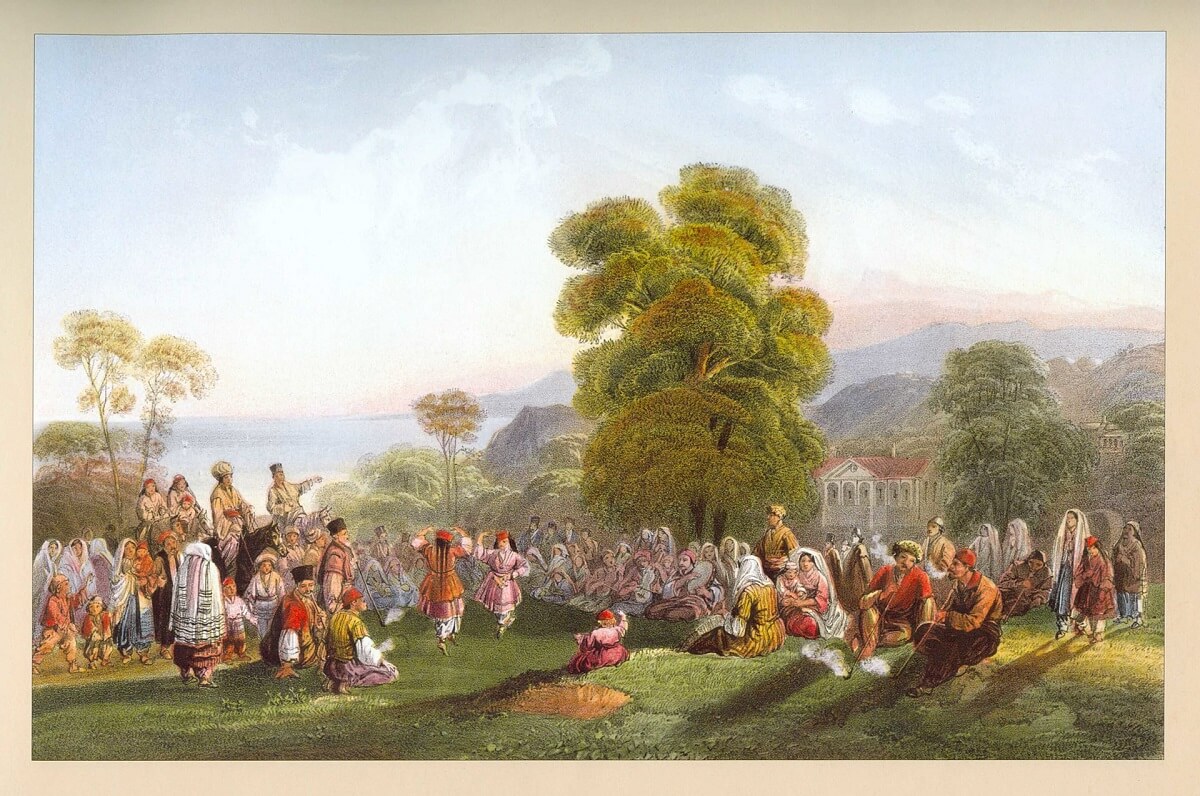
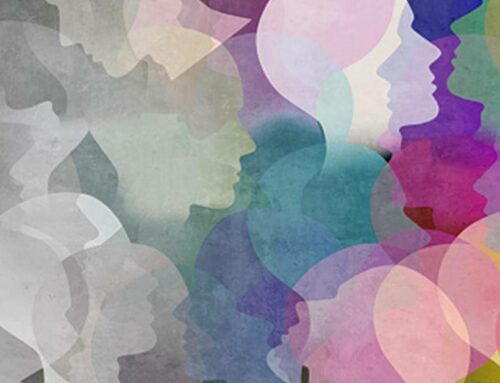
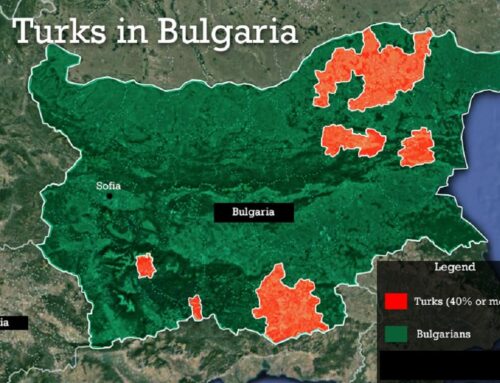
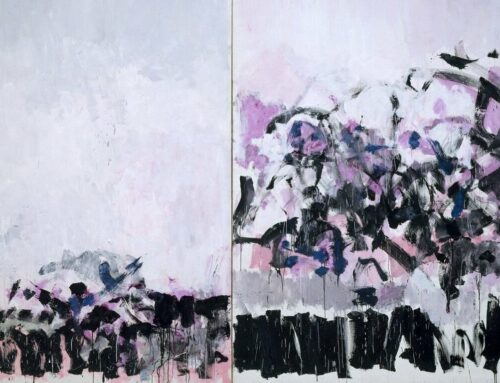
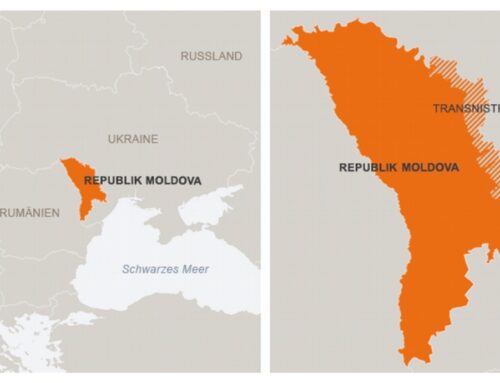
Hinterlasse einen Kommentar